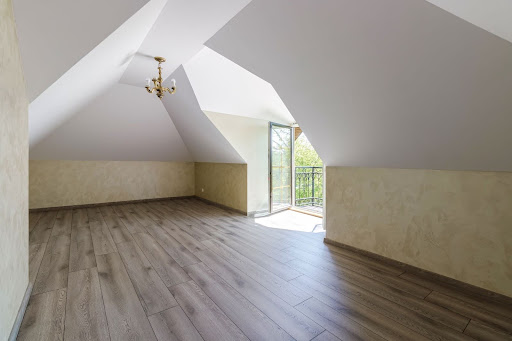Converting your attic into a finished room is an exciting renovation project that can significantly increase your home’s value and living area. However, heating and cooling a finished attic presents unique challenges due to its location at the top of the house. At Johnson & Johnson Heating and Air Conditioning, we’re experts in creating comfortable living spaces. Read on to learn about effective strategies to keep your attic comfortable year-round while exploring options like insulation, ventilation, and modified or specialized HVAC systems.
Understanding Attic Space Dynamics
Before selecting a heating or cooling system for your finished attic, it’s crucial to understand the dynamics of your attic space. Attics are often subject to extreme temperatures because they are directly beneath the roof. In the summer, the sun heats the roof, which in turn heats the attic space, making it substantially hotter than the first and second floors. Conversely, in winter, without proper insulation, attics can become very cold as heat from the living space below rises and escapes. For this reason, having a reliable, efficient, and cost-effective plan for heating and cooling that space becomes an important consideration.
Options for Cooling a Finished Attic
Central Air Conditioning
If your home already features central air conditioning, extending it to include your attic is a viable option. This integration ensures that the attic benefits from the same cooling system that serves the rest of your home. However, this might require significant modifications to your existing HVAC ductwork to direct sufficient airflow to the attic. Also, consider that adding ductwork to a finished attic to extend an existing central AC unit might overburden the system if it wasn’t originally designed to cool the additional space. Air conditioning units are often sized based on the existing livable space, so homeowners should ensure their current system has the capacity to handle the added load of cooling the attic as well.
Window AC and Portable AC Units
For a simpler setup, a window air conditioner or a portable AC can provide immediate cooling to a finished attic space. These units are less costly to install and can be effective in smaller attic spaces. However, they may not be as energy efficient as other solutions and can be visually unappealing. If your finished attic lacks windows, window AC units won’t be a viable cooling option. Additionally, portable air conditioners often necessitate regular emptying of water reservoirs, which can be cumbersome and less practical for consistent use.
Heating Solutions for Finished Attics
Space Heaters
Portable space heaters can temporarily warm up an attic during colder months. They’re inexpensive and can be moved as needed. However, they are not suitable for heating larger spaces and can significantly increase energy costs if used frequently.
Extend Existing Central Heating
Like with central air, extending your existing heating installation to reach the attic is possible. This option allows your attic to benefit from the same heating system as the rest of your house. It requires an upfront investment but is beneficial for consistent, long-term use. Like AC units, furnaces are also selected based on the size of a house, so it’s crucial to ensure that the existing heating system can accommodate the added space of a finished attic. If the current furnace cannot efficiently heat the additional area, a furnace upgrade may be necessary to maintain overall home comfort and efficiency.
Single-Zone Mini-Split Systems for Heating and Cooling
A single-zone mini-split system is an excellent solution for attics without existing ductwork. These systems are energy efficient, do not require extensive installation, and provide both heating and cooling, making them ideal for maintaining a consistent temperature in finished attic spaces. Mini-split systems consist of an indoor unit and an outdoor compressor or condenser that are connected by a small conduit. They operate quietly and can be controlled independently of other heating and cooling systems in the home, offering precise temperature management for specific areas without the need for major ductwork modifications.
Ventilation and Insulation
Proper ventilation and insulation are key to maintaining energy efficiency in your attic. Ensure that your attic walls are properly insulated to minimize heat loss in winter and heat gain in summer. Additionally, consider installing soffit vents, ridge vents, or gabled wall fans to enhance air circulation, which helps keep the attic cool.
When to Consult a Professional
It’s advisable to consult with a professional like Johnson and Johnson Heating and Air Conditioning before beginning your attic renovation project. We can offer guidance on the best heating and cooling options based on your attic configuration and ensure that any installations are completed correctly. This allows you to incorporate proper heating and cooling for your finished attic into your original design and budget. However, if your project is already completed, we can suggest alternatives to optimize your attic’s climate control.
Contact Us for Heating and Cooling Services
For residents of Martinsburg, WV, Frederick, MD, and surrounding areas looking for expert advice on heating and cooling solutions for a finished attic, contact Johnson & Johnson Heating and Air Conditioning. Using a space heater and a window AC unit are not your only options for regulating attic temperature fluctuations throughout the year. We’re ready to help you explore the most efficient and cost-effective options for your home. Schedule a consultation with us to ensure your finished attic is as comfortable as every other room in your house.













